From taking their shoes off at the door to serving mounds of fries and cheese curds smothered in brown gravy to signs in banks and other public places offering translators in 60 languages, Canadians go out of their way to be polite, accommodating, and welcoming.
Canada‘s three territories and ten provinces hold a wealth of fish and wildlife, including some of the world’s best salmon in British Colombia, abundant game fish throughout the land, plus ample large game animals, waterfowl, and game birds.
In addition, Canada’s government explicitly supports sports and fitness, and the economy is the 9th largest in the world.
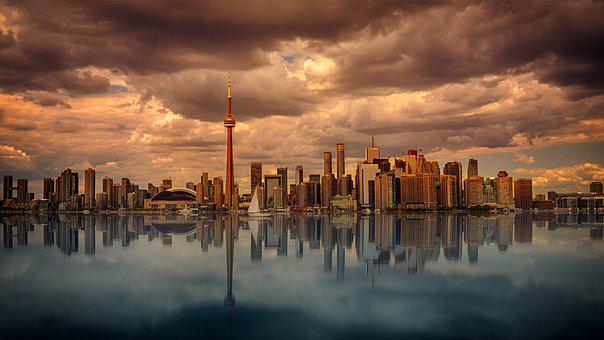
Contents
- Pros of Living in Canada
- Cons of Living in Canada
- Pros and Cons of Living in Canada – Summary Table
- Canada Safety Overview
- Frequently Asked Questions
- How ingrained is the practice of removing one's shoes before entering a building?
- Where does Canada expect to find the majority of its workforce if current population trends continue?
- How many homes does Canada need to keep pace with immigration?
- How many languages do Canadian banks and government offices need to be able to translate?
- Which Canadian province or territory set the lowest recorded winter temperature?
- What industry threatens to throttle Canada's economic health if conditions do not change?
- What health services does every Canadian and permanent resident receive without fees or copay at the time of service?
- How does the Canadian government support physical health and medical care?
- How many types of salmon inhabit Canada's waterways?
- What sport has taken the interest of a larger share of Canada's youth, replacing hockey?
- How many types of visas can immigrants to Canada receive?
- What percentage of Canada's population bears the most risk of suffering a violent crime?
Pros of Living in Canada
1. Health Care
Canada-born residents and immigrants alike point to Canada’s health system with pride.
All Canadian citizens and permanent residents receive medically-necessary primary care, hospital services, and diagnostic testing free at the point of service, with no out-of-pocket costs, copay, or fees.
However, this does not include prescriptions, dental, vision, rehabilitative, or mental health services.
In addition, even immigrants receive emergency medical services, although most services will not begin until three months after entering Canada with the intent to become a permanent resident.
2. Safety
Canada stands 109th out of 172 nations in its rate of intentional homicide, although that figure conceals a critical disparity.
Indigenous Canadians accounted for over a third of the 743 homicide victims per 100,000 people in 2020.
Canada’s crime statistics combine crimes reported to the police with offenses reported on the General Social Survey, conducted by the Social and Aboriginal Statistics Division, which takes place every five to seven years.
Although Canada’s police recorded one-fourth of all reported crimes in 2020 as violent, more than half resulted in little or no physical harm.
Likewise, 70 percent of the non-violent crimes consisted of vandalism, bail and parole violations, fraud, and petty theft.
3. Diversity and Inclusion
In a country with the second-largest land mass, Canadians rank 39th in population.
Canada’s current population is 38,389,301, living mainly along the southern border.
Nevertheless, Canada welcomes immigrants with open arms due to the disparity between Canada’s birth rate and future workforce needs.
The top five languages in Canada are English, French, Mandarin, Cantonese, and Punjabi, although you will hear more than 200 languages spoken here, including 60 indigenous ones.
4. Hunting
Because people cluster along the southern border, vast tracts of land in Canada have few people living on them.
Head north of any major city in Canada, and you find yourself surrounded by nature at its most pristine.
Hunt black-tailed deer on Haida Gwaii in British Columbia, elk and bighorn sheep in Alberta, whitetail deer in Saskatchewan, ducks in Manitoba, black bears in Ontario, ruffed grouse in Quebec, woodcock in New Brunswick, ring-necked pheasant in Nova Scotia, moose in Newfoundland, Canada geese on Prince Edward Island, Wood Bison in the Yukon, Dall’s sheep in the Northwest Territories, caribou in Nunavut.
5. Fishing
Canada’s rivers boast chinook, pink, and sockeye salmon, especially along British Colombia’s western shores.
Moreover, trophy-size walleye inhabit the Red River and Lake Winnipeg.
In addition to salmon and walleye, you can also try fly-fishing for Northern pike, steelhead, and trout.
If you prefer ice fishing, try the Northern Ontario portion of Lake Huron and Lake Superior, where you will find perch and whitefish.
Finally, in Yukon, Northwest Territories, and Nunavut, try fishing for kokanee — a type of landlocked sockeye salmon — or catch some Arctic grayling and char.
If you intend to smoke your kokanee, butterfly them, turn them into croquettes, or make dip if they fall apart during cooking.
6. Physical Fitness and Sports
Unlike the United States, Canada has a formal governmental policy directly overseeing sports, including introducing fundamental skills, knowledge, and attitudes to encourage and enable participation in organized and unorganized physical activity.
National policy also dictates providing Canada’s people with plenty of opportunities for recreational, competitive, and high-performance sports and includes promoting sports for economic development.
Lacrosse in summer, hockey in winter, and basketball in the off-season provided the majority of Canada’s need for organized physical activities.
However, soccer has made inroads among Canada’s youngest inhabitants recently.
7. Economy
Canada has the world’s ninth-largest economy, but it depends heavily on manufacturing, mining, oil and gas extraction, real estate, property rental, and leasing.
Online business platform Shopify makes its headquarters in Ottawa.
8. Majestic Natural Wonders
Although nearly everyone has at least seen or heard of Niagara Falls in Ontario, Canada boasts another more impressive waterfall: Virginia Falls in the Northwest Territories.
Its spectacular 315-foot drop eclipses its eastern counterpart by almost double.
9. Food
From their back bacon – called Canadian bacon in the United States – to maple syrup, poutine, and ketchup chips, Canada’s comfort foods have cross-cultural significance in the United States.
Cons of Living in Canada
Canadian life does have some flaws, however, including several unexpected customs.
1. Leaving Shoes Outside
According to Toronto, Ontario resident and Media World CEO Tracey Stepanchuk, Canadians remove their shoes before entering a home or a business, disconcerting newcomers like herself when she first arrived.
2. Taxes
Canada’s excellent social safety net and healthcare come at a price: a 15 to 20 percent tax rate.
However, that rate does not apply to all your income because Canada has a progressive or graduated tax system in which you pay one amount on all income in the lowest tax bracket.
You pay on only the income that exceeds that first level, and so forth until you reach the highest tax rate.
Understanding how each class works makes Canada’s taxes seem a little more reasonable, especially in light of the enormous numbers of people in other countries who have bankrupted themselves by paying high healthcare costs.
3. Inaccessibility
Vast expanses of Canada can only be reached by air or seaplanes, especially in the Northwest Territories, Yukon, and Nunavut.
Until 2017, the Tuktoyaktuk Winter Road, made famous by the reality show Ice Road Truckers used to connect Inuvik with Tuktoyaktuk during the winter by following the frozen channels of the Mackenzie River and traveling over a solidified portion of the Arctic Ocean.
4. Uneven Economic Development
You only need to look at the Real GDP by Province in the 2019 chart created by the Conference Board of Canada to see the income disparities in Canada.
Alberta made half as much GDP in 2019 as Prince Edward Island.
In addition, the chart does not include the Northwest Territories, Yukon, or Nunavut.
Post- Covid 19, Canada’s economy still suffers, especially among the female half of the workforce.
Creating an economy less dependent on foreign trade and natural resource extraction would raise incomes and stabilize the economy against future shocks.
5. Housing Costs
Almost a third of Canada’s housing stock belongs to multiple-property owners who invested in real estate, making homeownership out of reach for first-time home buyers.
Canada’s generous immigration policies have also tightened the housing supply.
Breaking real estate investors’ current stranglehold will require creating approximately 400,000 homes annually through 2030.
6. Formality
Despite being some of the most polite people in the world, most Canadians expect formality: use Mr., Mrs., Miss, Mademoiselle, Madame, and Monsieur when addressing them, not their first names only or nicknames.
7. Separation of Work and Home
Canadians are sticklers for another type of formality: they do not often mix work and personal life.
Coworkers do not ordinarily socialize, and friends do not go into business together.
Do not expect Canadians to answer work emails after business hours or while vacationing.
8. Winter
There’s a good reason you hear terms like Alberta Clipper, Chinook winds, and Polar Vortex in the winter: Canada’s record low temperature in Snag, Yukon was a face-freezing -62.8° C in February 1947.
The most recent excessively-low temperature also occurred in the Yukon in Old Crow in 1975.
From October 21 through February 20, the town of Eureka in Nunavut experiences polar night, when the sun never appears above the horizon.
The opposite of polar night is Midnight Sun, where the sun never sets below the horizon.
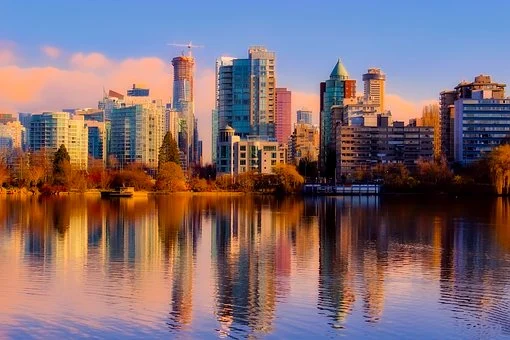
Pros and Cons of Living in Canada – Summary Table
| Pros of Living in Canada | Cons of Living in Canada |
|---|---|
| 1. Health Care | 1. Leaving Shoes Outside |
| 2. Safety | 2. Taxes |
| 3. Diversity and Inclusion | 3. Inaccessibility |
| 4. Hunting | 4. Uneven Economic Development |
| 5. Fishing | 5. Housing Costs |
| 6. Physical Fitness and Sports | 6. Formality |
| 7. Economy | 7. Separation of Work and Home |
| 8. Majestic Natural Wonders | 8. Winter |
| 9. Food |
Canada Safety Overview
READ THE FULL REPORT: Canada Safety Review
Safety Index: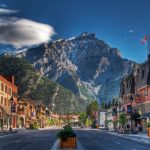
- OVERALL RISK: LOW
- TRANSPORT & TAXIS RISK: LOW
- PICKPOCKETS RISK: LOW
- NATURAL DISASTERS RISK: LOW
- MUGGING RISK: LOW
- TERRORISM RISK: LOW
- SCAMS RISK: LOW
- WOMEN TRAVELERS RISK: LOW
Frequently Asked Questions
How ingrained is the practice of removing one's shoes before entering a building?
Even Canadian workers will attempt to remove their shoes as they enter a home.
Canadians will also bring a second pair of indoor-only shoes to job interviews and special events if shoes are part of their overall look.
Where does Canada expect to find the majority of its workforce if current population trends continue?
Immigration accounts for 21 percent of Canada’s population as of 2021, and two-thirds of recent immigrants have university degrees or post-secondary certificates.
How many homes does Canada need to keep pace with immigration?
Canada needs to build 400,000 homes every year through 2030.
However, supply chain issues, material shortages, and worker shortages make reaching that figure unlikely.
How many languages do Canadian banks and government offices need to be able to translate?
Canada’s businesses and government offices must be able to provide services in at least 60 languages.
In all, Canadians speak 200 languages.
Which Canadian province or territory set the lowest recorded winter temperature?
Snag, Yukon Territory, in 1947 set the lowest temperature on record.
What industry threatens to throttle Canada's economic health if conditions do not change?
The real estate investment industry has gobbled 30 percent of Canada’s available housing units.
What health services does every Canadian and permanent resident receive without fees or copay at the time of service?
All primary care, diagnostic service, acute hospital care, and emergency medical care cost nothing when medically necessary.
How does the Canadian government support physical health and medical care?
Canada supports sports and recreation and purposely develops sports venues and recreational areas using public funds.
How many types of salmon inhabit Canada's waterways?
Chinook, pink, sockeye, and kokanee salmon live in Canadian waters.
Soccer has increased in popularity among Generation Z and younger children.
How many types of visas can immigrants to Canada receive?
There are 100 ways to immigrate to Canada.
Thanks to the housing crisis, Canada needs an influx of construction workers through 2030.
What percentage of Canada's population bears the most risk of suffering a violent crime?
Indigenous people account for a third of all murder victims.
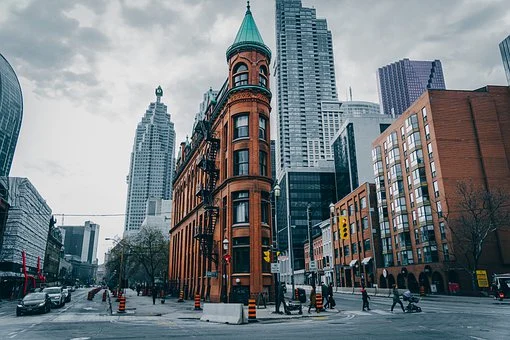
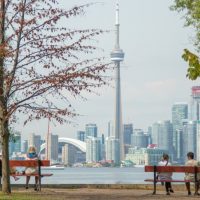


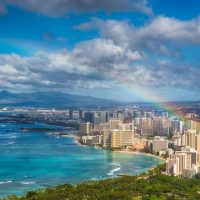
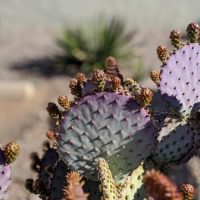






Thanks for sharing such a nice post. This information is particularly useful for all those people, who are planning to immigrate to Canada.
Additionally, exploring neighborhood restaurants and food stalls will give you a chance to savor authentic Canadian dishes.
Whether it’s trying poutine in Quebec, enjoying Pacific salmon in British Columbia, or feasting on Alberta beef in the Prairies, each province has its own gastronomic highlights. Engaging with locals and asking for their recommendations can lead you to hidden gems and local favorites. Canadian cuisine also celebrates diverse cultural influences, so don’t miss the opportunity to try international flavors such as Chinese dim sum in Vancouver, Italian pasta in Montreal, or Lebanese shawarma in Toronto.
Sorry but ranking 109th out of 172 nations in safety (172 being the safest) is definitely not a Pro: over 1 in every 3 countries in the world is safer than Canada.
I would hide this fact very well and clearly not put it as second pro. If anything, living in Europe (Switzerland) I am reading this as a massive Cons